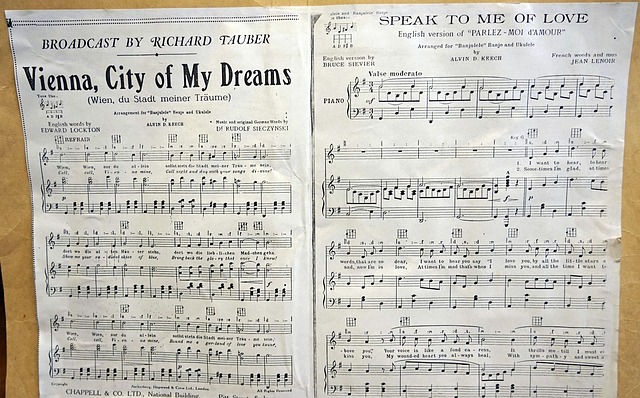Song composition skills are crucial for music producers, requiring practice in melody, harmony, and rhythm. Exploring history, notation, and improvisation enhances creativity. Diverse musical styles enable unique, compelling songs. Sound design and sampling add emotional depth and global influences. Collaboration weaves together diverse talents, creating genre-defying songs with social impact.
Music producers are the architects of modern hits, crafting intricate sounds that resonate globally. This insightful guide explores the art behind their success. From understanding the fundamentals of song composition to mastering sound design and sampling, we delve into the creative process. We uncover the power of collaboration, where diverse elements merge to create unforgettable melodies. Discover how these strategies elevate songs from ordinary to extraordinary, making them stand out in today’s competitive music landscape.
- Understanding the Art of Song Composition
- The Role of Sound Design and Sampling
- Collaboration: Weaving Different Elements Together
Understanding the Art of Song Composition

Understanding the Art of Song Composition is a crucial step for any music producer aiming to create hits. It involves more than just pressing play on a DAW (Digital Audio Workstation). A good composer must possess a strong sense of melody, harmony, and rhythm – skills often honed through years of practice and study. Delving into music history timeline for beginners can offer valuable insights, as studying the greats allows producers to appreciate timeless compositional techniques. Additionally, musical notation and reading skills are essential, enabling them to translate their creative visions onto paper or a screen.
Improvisation plays a significant role in this process, especially in genres like jazz and blues where spontaneous composition is celebrated. This skill set not only enriches the creative process but also fosters versatility. By exploring different musical styles, producers can find us at introducing instruments and their roles, expanding their palette and contributing to their ability to craft diverse and compelling songs. Whether it’s through structured composition or improvisational bursts, the art of creating a song is as much about the journey as it is about the destination – the final hit record.
The Role of Sound Design and Sampling

In the realm of music production, sound design and sampling play a pivotal role in crafting memorable and impactful songs. Music producers meticulously shape each element of a track, from creating unique sounds to manipulating existing ones through innovative sampling techniques. By combining traditional instruments with digital synthesizers and various audio editing software, producers can create a vast array of timbres and textures that set their productions apart. This artistic process involves transforming ambient noises or fragments from other songs into new, captivating melodies, thereby offering endless possibilities for creative expression.
The art of sound design allows music producers to tell stories and evoke emotions within their songs. They craft atmospheres, build tension, and create drop-dead moments that keep listeners engaged. Moreover, sampling provides a gateway to explore diverse musical genres and cultures. As the music industry evolves, producers draw inspiration from various sources, including world music’s folk traditions (which find us at modern concert hall experiences) and social change movements where music has been used as a powerful tool. These influences contribute to the dynamic landscape of contemporary hits, ensuring that each song stands out as a unique fusion of creativity and technical expertise.
Collaboration: Weaving Different Elements Together

Collaboration plays a pivotal role in music production, especially when aiming to create hits that resonate with audiences. Producers often bring together diverse talents, weaving different elements into a cohesive musical narrative. By collaborating with singers, rappers, instrumentalists, or even other producers, they can blend unique voices, styles, and experiences to craft songs that transcend genres. This process involves careful consideration of dynamics, ensuring each element finds its place in the song’s tapestry.
Music as a tool for social change has historically been a powerful medium, and producers often tap into this aspect during collaborations. A historical journey through music genres reveals how artists have used their music to address societal issues, express cultural narratives, or simply evoke emotions. By embracing collaboration, producers can create songs that not only capture the current musical landscape but also leave a lasting impact, fostering music appreciation on a deeper level and providing listeners with an experience that goes beyond the beats per minute. Find us at sound engineering basics for recording to learn more about bringing these collaborative visions to life.
Music producers craft hits by combining their understanding of song composition, innovative sound design and sampling techniques, and collaborative efforts. Through these elements, they transform ideas into vibrant, captivating tracks that resonate with listeners worldwide. By mastering these skills and constantly pushing creative boundaries, producers continue to shape the ever-evolving landscape of music.








Leave a Reply